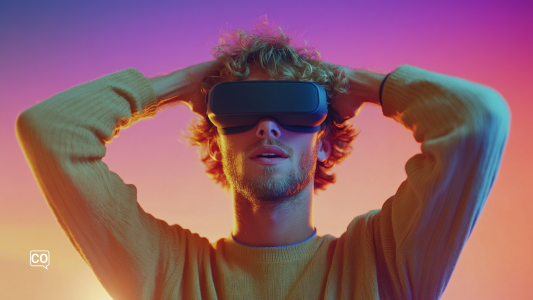Explore Polish vocabulary related to virtual reality (wirtualna rzeczywistość) and artificial intelligence (sztuczna inteligencja), including terms like "algorytm" and "symulacja," to discuss technology advances at the B2 level.
Exercises Share Copied!
These exercises can be done together during conversation lessons or as homework.
Coming soon...
Don't see progress when learning on your own? Study this material with a certified teacher!
Do you want to practice Polish today? That is possible! Just contact one of our teachers today.
Understanding Virtual Reality and Artificial Intelligence in Polish
This lesson focuses on expanding your vocabulary and comprehension related to the modern fields of virtual reality (VR) and artificial intelligence (AI) in Polish, tailored for B2-level learners. You will explore essential words, expressions, and concepts that describe technology, innovation, and their impact on society.
Key Vocabulary and Expressions
- Wirtualna rzeczywistość – virtual reality
- Sztuczna inteligencja – artificial intelligence
- Algorytm – algorithm
- Interfejs – interface
- Symulacja – simulation
- Uczenie maszynowe – machine learning
- Robotyka – robotics
- Dane – data
- Przetwarzanie – processing
- Autonomiczny – autonomous
Main Concepts Explained
The lesson introduces you to the differences between the two technologies: VR is about creating immersive digital environments, while AI involves programming machines to perform tasks that typically require human intelligence. You'll learn how to explain these concepts, discuss their applications, and describe their benefits and challenges in Polish.
Useful Language Highlights
You will discover phrases used in technology discussions such as:
- Technologia wirtualnej rzeczywistości pozwala na... – Virtual reality technology allows for...
- Sztuczna inteligencja może analizować dane szybciej niż człowiek. – Artificial intelligence can analyze data faster than a human.
- Interfejs użytkownika musi być intuicyjny. – The user interface must be intuitive.
Differences Between English and Polish in This Lesson
Polish uses gendered nouns and cases, which affect word endings; for instance, wirtualna rzeczywistość is feminine, so associated adjectives and verbs must agree accordingly. English abstracts many technical terms without grammatical change, but in Polish you will need to adjust endings to fit the sentence context. For example, the English noun "interface" becomes interfejs in Polish and follows masculine declension patterns.
Also, while English often forms compound phrases like “machine learning” straightforwardly, in Polish you will encounter uczenie maszynowe, where the adjective follows the noun and must agree in number and gender according to Polish grammar rules.
This lesson helps you become comfortable constructing such expressions naturally and confidently in Polish.







